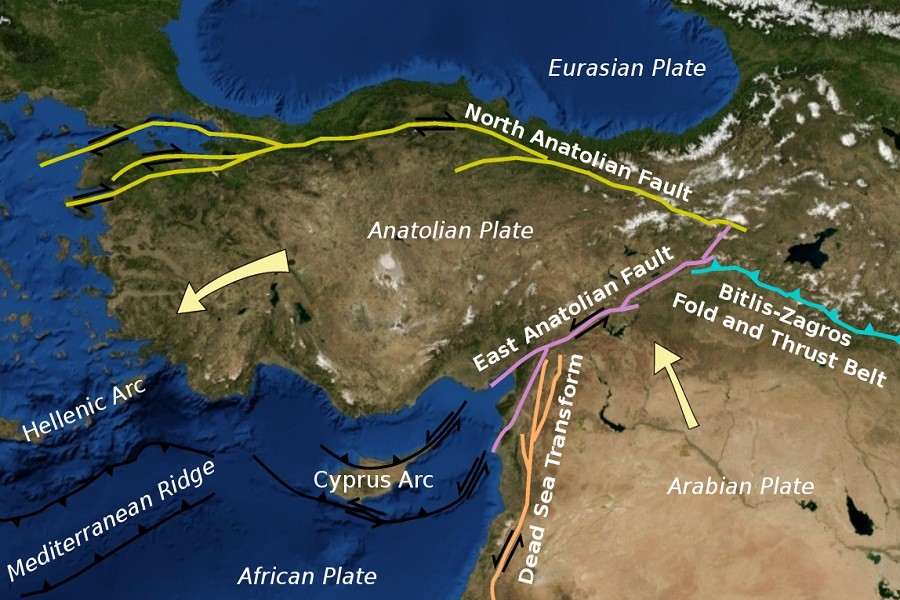The devastating earthquake in Turkey and Syria is one of the biggest humanitarian disasters in recent times, already claiming more than 24 thousand lives, and certainly, the number will go high as plenty are still lying under the rubble.
While the whole world is showing support for the quake-stricken Turkish and Syrian regions, discussion about how such a massive quake happened is ongoing.
Two of the world's riskiest fault lines are sitting under Turkey, making it one of the most quake-prone countries in the world.
The East and North Anatolian Fault Systems are two major active fault systems located in the eastern part of Turkey, both of which are capable of generating large and potentially damaging earthquakes. The quake that shook Turkey originated from the East Anatolian fault. Before we know more about it, let's see what a fault system is.
What is a fault line?
A fault line is a fracture or zone of fractures between two blocks of the earth's crust that got separated long ago, more than 400 billion years ago, when tectonic plates moved and the earth's continents divided themselves.
The movement along the fault line is caused by tectonic activity, which releases energy in the form of earthquakes.
Fault lines are classified based on the type of movement along the fault. There are three main types of fault lines: Strike-slip fault, characterised by horizontal movement along the fault line; Reverse fault, characterised by vertical movement along the fault, where one block of crust moves up and over the other block; and Normal fault, characterised by vertical movement along the fault, where one block of crust moves down relative to the other block.
The active faults in Turkey
The East Anatolian Fault System runs along the eastern edge of the Anatolian Plateau, from the Southeast of Turkey to the Northeast. It is a strike-slip fault system, where the fault's two sides move horizontally past each other.
This fault system has been responsible for several large earthquakes in the past, including the 1940 Erzincan earthquake, which had a magnitude of 7.8, and the 1992 Erzurum earthquake, which had a magnitude of 6.8-6.9.
The North Anatolian Fault System runs along the Northern edge of the Anatolian Plateau, which is also a strike-slip fault system. It was responsible for the 1939 Erzurum earthquake, which had a magnitude of 7.8, and the 1999 Izmit earthquake, which had a magnitude of 7.4 and resulted in over 17,000 deaths.
Both these fault systems are considered some of the world's most active and potentially dangerous faults. Seismic hazard assessments have shown that these fault systems have the potential to generate earthquakes with magnitudes of up to 8.0, and we have just witnessed a magnitude 7.8 one.


